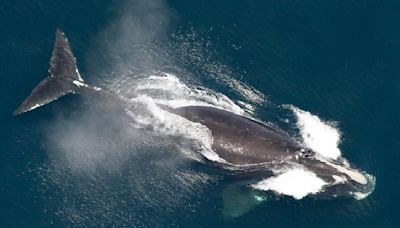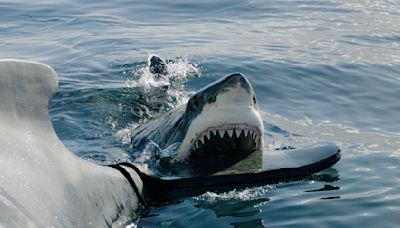Search results
Whales are a widely distributed and diverse group of fully aquatic placental marine mammals. As an informal and colloquial grouping, they correspond to large members of the infraorder Cetacea, i.e. all cetaceans apart from dolphins and porpoises. Dolphins and porpoises may be considered whales from a formal, cladistic perspective.
Jun 21, 2024 · whale, any of the larger species of aquatic mammals belonging to the order Cetacea.The term whale can be used in reference to any cetacean, including porpoises and dolphins, but in general it is applied to those more than 3 metres (10 feet) long.An exception is the 2.7-metre dwarf sperm whale (Kogia simus), so called for its otherwise striking resemblance to its larger namesake.
Whales. Whales are the largest animals on Earth and they live in every ocean. The massive mammals range from the 600-pound dwarf sperm whale to the colossal blue whale, which can weigh more than ...
Facts. Whales roam throughout all of the world's oceans, communicating with complex and mysterious sounds. Their sheer size amazes us: the blue whale can reach lengths of more than 100 feet and weigh up to 200 tons—as much as 33 elephants. Despite living in the water, whales breathe air. And like humans, they are warm-blooded mammals who ...
Blue whales are among Earth's longest-lived animals. Scientists have discovered that by counting the layers of a deceased whale's waxlike earplugs, they can get a close estimate of the animal's ...
Aug 27, 2017 · Blue whales are the largest animals to have ever existed. Learn why they're larger than any land animal and why they were hunted for years, making them endan...
The blue whale (Balaenoptera musculus) is a marine mammal and a baleen whale.Reaching a maximum confirmed length of 29.9 meters (98 ft) and weighing up to 199 tonnes (196 long tons; 219 short tons), it is the largest animal known ever to have existed. The blue whale's long and slender body can be of various shades of greyish-blue dorsally and somewhat lighter underneath.
A blue whale can eat as much as one ton of krill per day at the peak of feeding time in Antarctica and fit as much as 150 percent of its body weight worth of water in one gulp. Groups of humpback whales will band together when feeding. One whale will dive down and begin to produce bubbles in a circle below the surface of the water.
Jun 10, 2024 · Blue whale, a species of baleen whale, a cetacean, that is the most massive animal ever to have lived. Weighing approximately 150 tons, it may attain a length of more than 30 meters (98 feet). Blue whales are predominantly blue-gray animals whose lower surfaces are lighter gray or white.
Whales - an Introduction. Whales, dolphins and porpoises are a group of marine mammals collectively known as cetaceans. Scientists estimate that there are approximately 90 species of cetacean. This distinctive and charismatic group includes the largest animal that ever lived and the longest-lived mammal. Some cetacean species demonstrate highly ...




